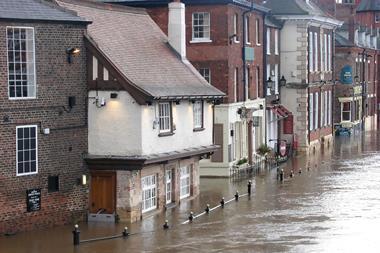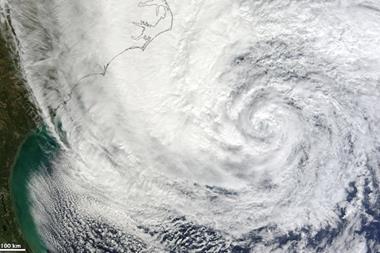As the cyclone wreaks its way through the US east coast, insurers will be wondering where the losses will fall
Cyclone Sandy has been dominating the headlines in the past 24 hours. Overnight, the cyclone, which has been dubbed “Frankenstorm” because of how it has been merging with other weather systems, battered the east coast of the USA.
New York City (NYC) is one of the worst-affected areas for flooding, while more than five million people are left without electricity and, so far, 13 people have been killed.
This morning, the picture was slightly clearer on the effect Sandy could have on (re)insurers. However, as the cyclone continues to smash its way up through the states, it is still too early to predict where the losses will fall.
While the sheer size and scale of Sandy cannot be overlooked, Shore Capital analyst Eamonn Flanagan said that with wind speeds equivalent to a Category 1 hurricane, it was weaker than some of the “monster” Category 4 and 5 storms that have slammed into the US Gulf Coast. He says this may not be enough to spark an increase in rates or affect Lloyd’s insurers’ plans to return capital to shareholders.
Policy holders may also be bailed out by the US National Flood Program, which will pick up losses not specifically covered by policies, as household and commercial flood protection is not a standard insurance cover in the USA.
Risk modelling firm EQECAT yesterday estimated that the insurance industry could be hit for between $5bn (£4bn) and $10bn as a result of Sandy.
However, Sandy has struck areas that have very high insured exposure values. In NYC, there is $2.1 trillion worth of insured property, mainly comprising commercial/industrial buildings.
This afternoon, Risk Management Solutions (RMS) said: “It is too early to estimate losses as ongoing event but to provide a benchmark, Irene affected similar region last year and caused about $4.5bn insured losses, but the Sandy event is much more severe (relate to characteristics) and has impacted NYC to a much worse degree than Irene.”
It’s been a benign year for catastrophes so far in 2012, particularly when compared to 2011 where total losses amounted to about $100bn according to various estimates.
It is highly unlikely that 2012 will come match that, but insurers will still be sweating on the unpredictability of Sandy.
Hosted by comedian and actor Tom Allen, 34 Gold, 23 Silver and 22 Bronze awards were handed out across an amazing 34 categories recognising brilliance and innovation right across the breadth of UK general insurance.












































No comments yet